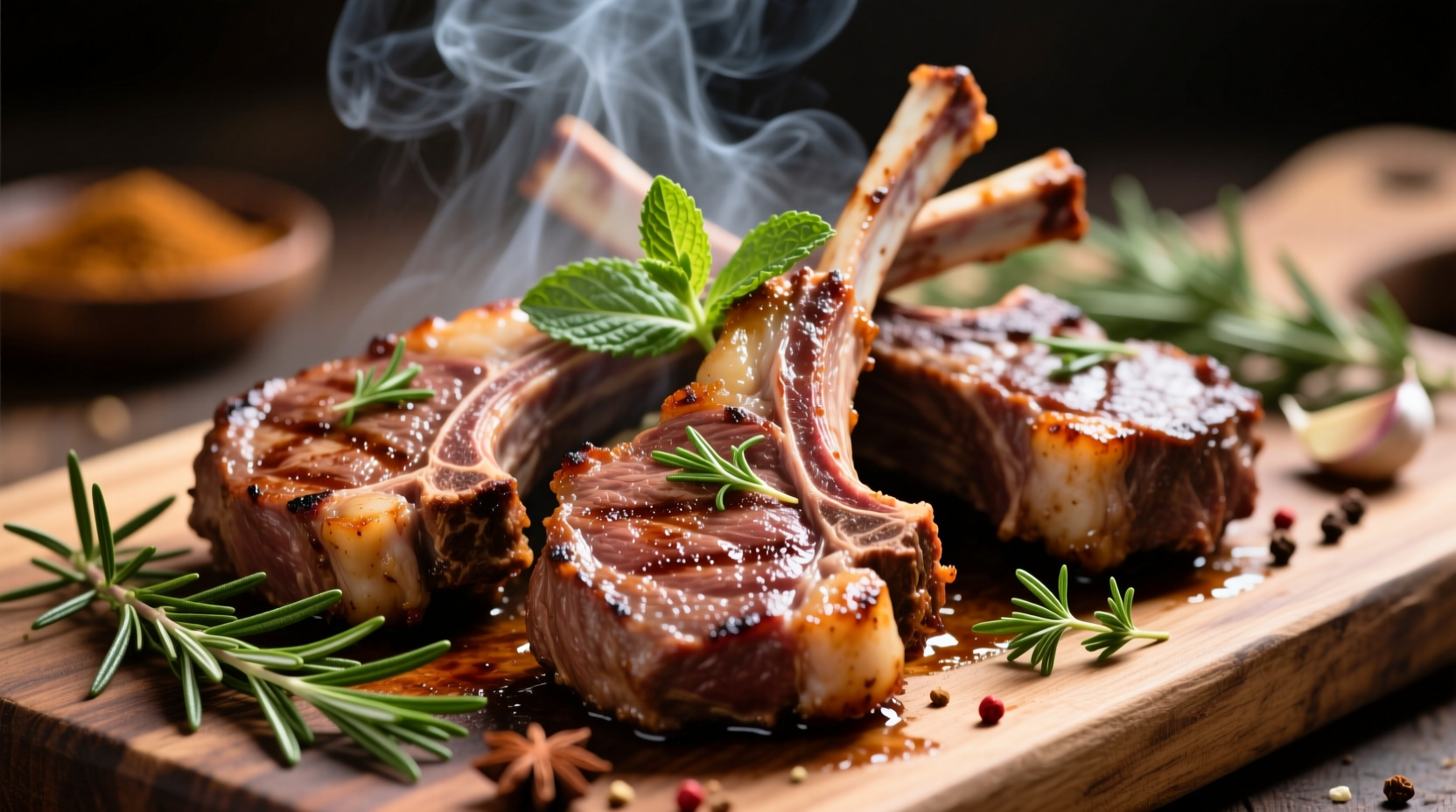Understanding Lamb's Distinctive Flavor Profile
When you bite into a perfectly cooked lamb chop, you're experiencing a complex flavor profile that sets it apart from other meats. Lamb contains branched-chain fatty acids (BCFAs), particularly octanoic and heptanoic acid, which create its signature 'gamey' character. These compounds develop naturally as sheep consume grasses and herbs in their diet, transferring those flavors into their fat.
Unlike beef or pork, lamb's flavor isn't just about the meat itself—it's deeply connected to the animal's environment. Sheep are browsers who selectively eat a variety of plants, including wild herbs that contribute distinctive aromatic compounds to their tissue. This is why New Zealand lamb often has brighter, grassier notes compared to American grain-finished lamb.
Lamb vs. Other Meats: A Flavor Comparison
| Meat Type | Flavor Profile | Fat Characteristics | Texture |
|---|---|---|---|
| Lamb | Earthy, slightly gamey, herbal notes | Distinct aroma from branched-chain fatty acids | Firm yet tender when properly cooked |
| Beef | Robust, umami-rich, nutty | Milder aroma, buttery when marbled | Chewier, more fibrous |
| Pork | Neutral, slightly sweet | Subtle, clean flavor | Softer, more delicate |
| Chicken | Mild, versatile base | Nearly neutral | Tender but less substantial |
This comparison shows why lamb stands out in the meat category. While beef offers deep umami and pork provides neutral versatility, lamb delivers a more pronounced flavor experience that can dominate a dish if not balanced properly.
Why Some People Describe Lamb as 'Gamey'
The term 'gamey' often carries negative connotations, but it simply describes lamb's natural flavor chemistry. According to research from the USDA Agricultural Research Service, the distinctive aroma comes primarily from 4-methyloctanoic acid and 4-ethyloctanoic acid—compounds found in higher concentrations in lamb than other domesticated meats.
Interestingly, cultural exposure plays a significant role in perception. A 2022 study published in the Journal of Sensory Studies found that individuals raised in cultures where lamb is commonly consumed (like Greece, New Zealand, and the Middle East) perceive these compounds as desirable 'earthy' notes rather than 'gamey' flavors. This demonstrates how flavor preferences develop through repeated exposure.

Four Key Factors That Shape Lamb's Taste
1. Age of the Animal
Lamb specifically refers to meat from sheep under 12 months old. As animals mature into mutton (over 2 years), the flavor intensifies significantly. The American Lamb Board notes that younger lambs (6-8 months) offer the mildest flavor profile, making them ideal for first-time lamb eaters.
2. Diet and Foraging Habits
Sheep raised on diverse pastures develop more complex flavors. Research from Colorado State University's Meat Science department shows that grass-fed lamb contains higher levels of omega-3 fatty acids and terpenes from consumed plants, creating those desirable herbal notes. Grain-finished lamb tends to have milder flavor with sweeter fat.
3. Breed Differences
Not all lamb tastes the same. Suffolk breeds produce meat with stronger flavor, while Merino offers milder notes. Icelandic lamb stands out for its exceptionally clean taste due to the sheep's natural diet of wild herbs in volcanic landscapes.
4. Cooking Technique
How you prepare lamb dramatically affects its final flavor:
- Grilling: Creates charred exterior that complements lamb's richness
- Slow roasting: Allows fat to render slowly, mellowing stronger flavors
- Marrow bone broths: Extract deep umami while reducing gaminess
- Marinating with acid: (lemon, vinegar) can soften intense notes
When Lamb's Flavor Shines: Contextual Considerations
Lamb's distinctive taste works best in specific culinary contexts. Mediterranean and Middle Eastern cuisines have perfected lamb preparation through centuries of refinement. The strong flavor stands up beautifully to bold ingredients like rosemary, mint, garlic, and cumin—flavors that would overwhelm more delicate meats.
However, lamb may not be the ideal choice when:
- You need a neutral protein base for delicate sauces
- Serving to guests unfamiliar with stronger meat flavors
- Creating dishes where meat shouldn't dominate other components
For first-time lamb eaters, starting with milder cuts like loin chops or ground lamb in familiar preparations (like lamb burgers with familiar seasonings) provides the gentlest introduction to its unique flavor profile.
Enhancing Lamb's Natural Flavor Through Preparation
Professional chefs use specific techniques to highlight lamb's best qualities while managing its stronger notes:
Fat management is crucial—trim excess fat but retain enough to carry flavor. The fat contains the aromatic compounds that define lamb's character. As Antonio Batali explains in his culinary research, "The fat is where lamb's soul resides—remove it completely and you lose what makes lamb special."
Resting time after cooking allows redistribution of juices and fat, creating more balanced flavor in every bite. For optimal results, rest lamb chops for 5-7 minutes before serving.
Acid balancing through finishing with lemon juice or serving with acidic accompaniments (like tzatziki or chimichurri) cuts through richness and refreshes the palate between bites.
Common Misconceptions About Lamb's Taste
Many people avoid lamb based on misconceptions:
- "All lamb tastes strongly gamey" – Modern farming produces remarkably mild lamb, especially from younger animals
- "Lamb always smells unpleasant" – Properly handled and fresh lamb has a clean, slightly sweet aroma
- "You need special spices to mask the flavor" – Quality lamb needs minimal seasoning to shine
Understanding these distinctions helps both novice and experienced cooks appreciate lamb's unique culinary value without unnecessary flavor masking.
Discovering Your Perfect Lamb Experience
Whether you're a first-time lamb eater or looking to deepen your appreciation, approach it with an open mind. Start with milder cuts from younger animals, prepared simply with quality olive oil, salt, and herbs. Pay attention to how different cooking methods transform the flavor profile. You might discover that what some call 'gamey' is actually a complex, satisfying depth that elevates your cooking beyond more neutral meats.
Remember that flavor preferences develop with exposure—many who initially find lamb challenging grow to appreciate its distinctive character through repeated, positive culinary experiences.











 浙公网安备
33010002000092号
浙公网安备
33010002000092号 浙B2-20120091-4
浙B2-20120091-4